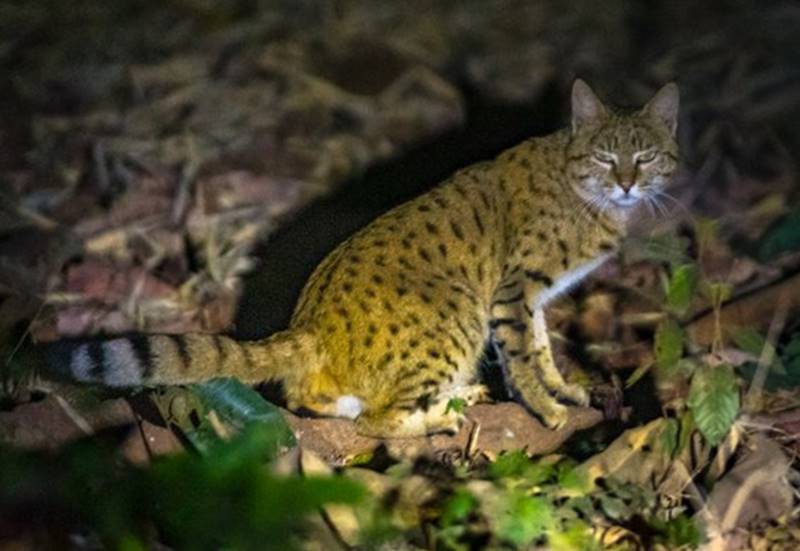After fishing cat, an Indian Desert Cat spotted at the Panna Tiger Reserve
Wildlife experts come to know of the presence of the Indian Desert Cat, thanks to photographs taken by a tourist at the Akola buffer zone at the Panna Tiger Reserve in Madhya Pradesh. This desert cat is usually a creature of the Thar desert in Rajasthan, and inhabits scrub desert areas.


Not much is known about the animal as there is not enough in-depth study done on it. Photo courtesy: Rupesh Kukade
Wildlife lovers were excited when in August this year, the fishing cat (Prionailurus viverrinus) was spotted at the Panna Tiger Reserve in Madhya Pradesh. They were in for more rejoicing when recently, a tourist captured images of the Indian Desert Cat while on a night safari at the tiger reserve’s Akola buffer zone.
“The Indian Desert Cat is usually a creature of the Thar desert in Rajasthan, and inhabits scrub desert areas,” Uttam Kumar Sharma, field operator, Panna Tiger Reserve, told Gaon Connection. “In 1999 they were spotted in Bikaner, Barmer, Jaisalmer, Pali and Nagaur districts of Rajasthan. However, between 1999 and 2006, only four Indian desert cats were sighted,” he added.
The Indian Desert Cat is also known as the Asiatic Wildcat or the Asian Steppe Wildcat.
Also Read: Endangered fishing cat finally ‘captured’ on camera at Panna Tiger Reserve
The desert cats have also been seen at the Nauradehi Wildlife Sanctuary in Madhya Pradesh and in the forests of Mirzapur forests in Uttar Pradesh.
The Indian Desert Cat is said to rest in the daytime and hunt in the night when it roams nearly five to six kilometres in search of prey that include smaller animals and birds.
Not much is known about the animal as there is not enough in-depth study done on it.
According to forest officials in Panna Tiger Reserve, the fur padding that the Asiatic Wildcat has on its paws protects it from extreme heat and the biting cold of desert nights. Besides, it also prevents the desert cat from leaving any pug marks on the desert ground that would otherwise make it easy prey for hunters.
Also Read: Buffer zones around tiger reserves in Madhya Pradesh open for monsoon tourism
The Indian Desert Cat is coloured such that it is camouflaged well in the desert sand, making it difficult to be spotted. The desert cat has big ears that are very sensitive and it can pick up the slightest sound, even a kilometre away. The desert cat can survive without too much water.
The Panna Tiger Reserve officials are checking old records to see if the Indian Desert Cat was ever spotted there, said Uttam Kumar Sharma. “While there is no photographic evidence from the past, these days, with easy access to mobile cameras of tourists, photographs and videoclips of many animals are coming up and becoming important records,” he pointed out.
Also Read: Heera and Panna, the inseparable tiger siblings of Panna Tiger Reserve, part ways
With inputs from Arun Singh, Panna, Madhya Pradesh.
Read the story in Hindi

